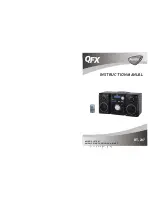
Hardware
3
This chapter contains the following sections:
•
•
•
•
•
Hardware Troubleshooting Tips
•
Only change one setting at a time (either a hardware or software setting).
•
Observe carefully and document all observations (for example, feature programming, call
states, time of day, problem symptoms and so forth).
•
If all the functionality supported by a module or card is out of service, it is likely defective. If
possible, swap the module or card with a known working module or card to confirm.
•
Check the Alarm logs in the System Administration tool for hardware alarms.
•
Check the LEDs on the hardware. Refer to “Appendix D: Status LEDs” in the
Technician’s
Handbook
for LED state information.
•
Verify that the IP addresses reserved for the hardware units are not used elsewhere on the
system. See the “Installation Planner” chapter in the
Technician’s Handbook
for a list of the
IP addresses that are reserved for the Analog Main Board (AMB), ASU and ASU IIs.
•
For phone related issues, is the problem occurring
•
on a single phone?
•
on a group of phones of a specific type (for example IP Phones only)?
•
on a group of phones within a specific Class of Service only (indicates a potential
programming conflict in COS Options form)?
•
during local-to-local calls only or local-to-external calls only?
•
For phone or trunk related issues, if you don’t find the solution in this chapter, you should
also check the troubleshooting tables in
•
Chapter 5:
•
Chapter 6:
•
Use the IP Phone Analyzer Tool to help you troubleshoot IP phone problems
Document Version 1.0
Troubleshooting Guide
40
Summary of Contents for MiVoice Business 3300 ICP
Page 1: ...MiVoice Business Troubleshooting Guide Release 9 4 SP1 Document Version 1 0 June 2022 ...
Page 10: ...Introduction Document Version 1 0 Troubleshooting Guide 4 ...
Page 45: ...Figure 4 DNS setting on MSL server manager ...
Page 323: ...Diagnosing Problems Document Version 1 0 317 Troubleshooting Guide ...
















































